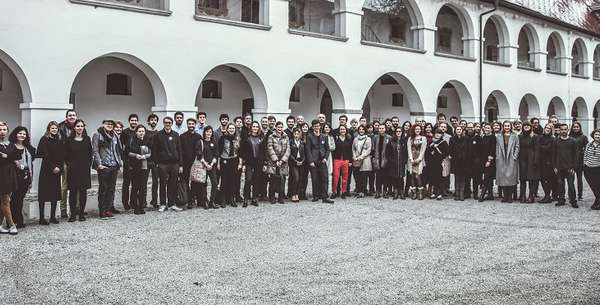Idea by
Vera Seriakov, Nela Kadic
Call for ideas 2016
Skopje. Beyond The Obvious
Skopje. Beyond The Obvious
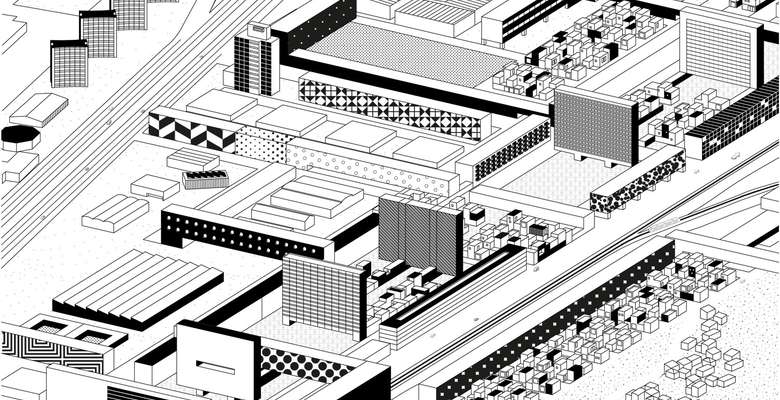
Our main goal is to improve the legibility of this complex urban agglomeration - especially in terms of upcoming generations of planners, who are in desperate need of a basis to work on, as well as of an impulse to a more holistic approach in urban planning. We think that theoretical input and the evolution of a new understanding of the city's matrix should be the ground for a structurally and socially adequate operating within the urban organism. Moreover we decided not to criticize obvious weaknesses in Skopje's urban development but to show real alternatives for a further development, which are resulting from the city's structure itself.
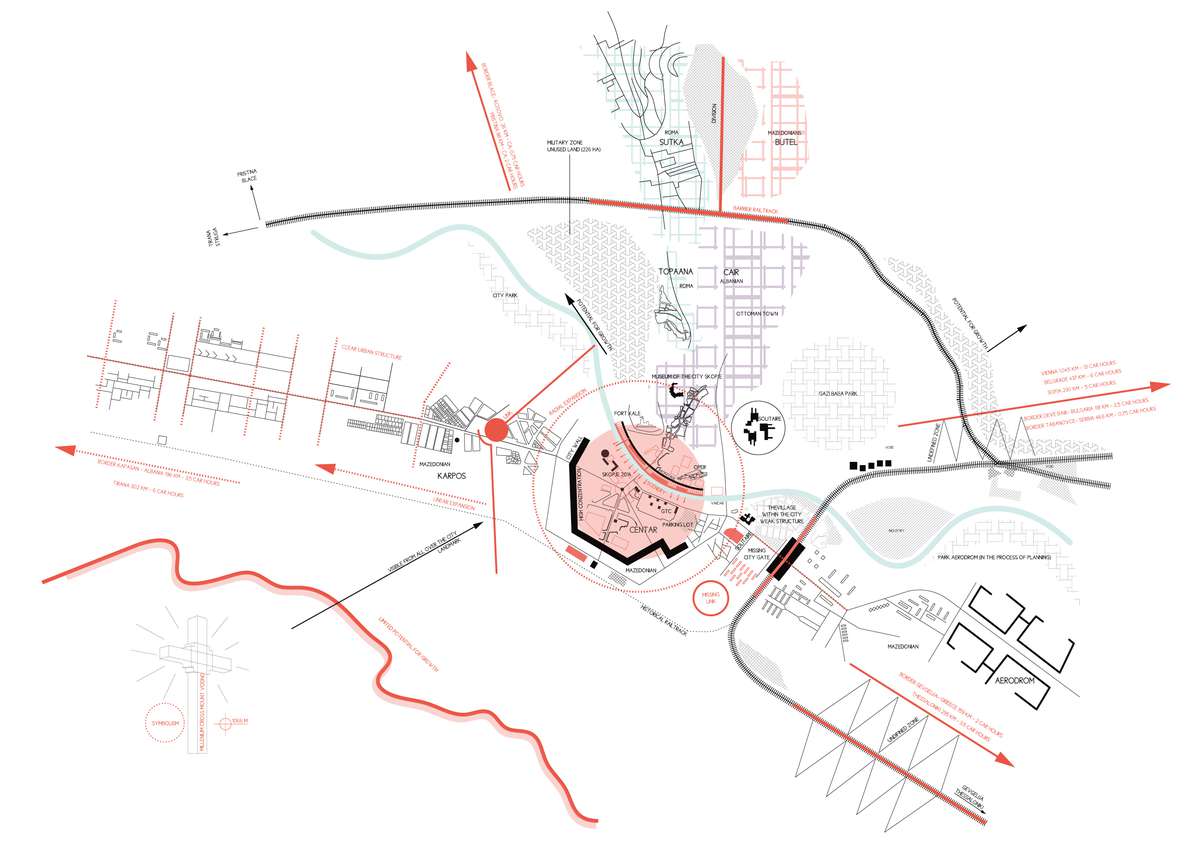
Why does the population in a traditional multi-cultural society so willingly separate itself by using natural or artificial barriers? And taking it further, continuing to erect even more symbolic and built barriers? What came first? Segregation or barriers?
How could a city consist of so many fragments and solitaires, break its continuity over and over, be reckless and rude? Where does this disproportional distribution of density and come from?
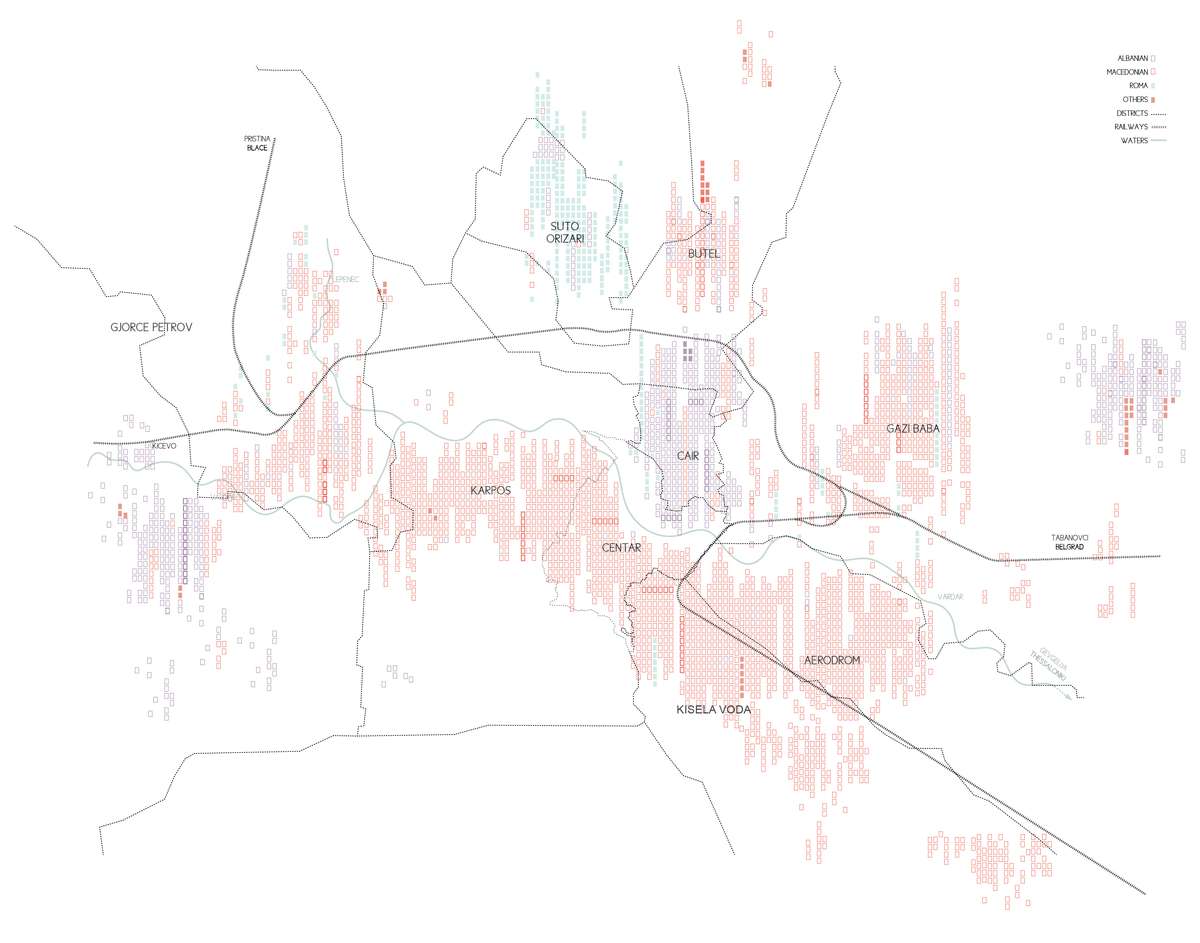
What can be clearly seen is how the segregation works quite consequently along geographical barriers as canyons, rural voids and the river Vardar as well as built and infrastructional barriers as for example the railtrack or boulevards.
But how could Skopje actually become that fragmented city we are dealing with today?
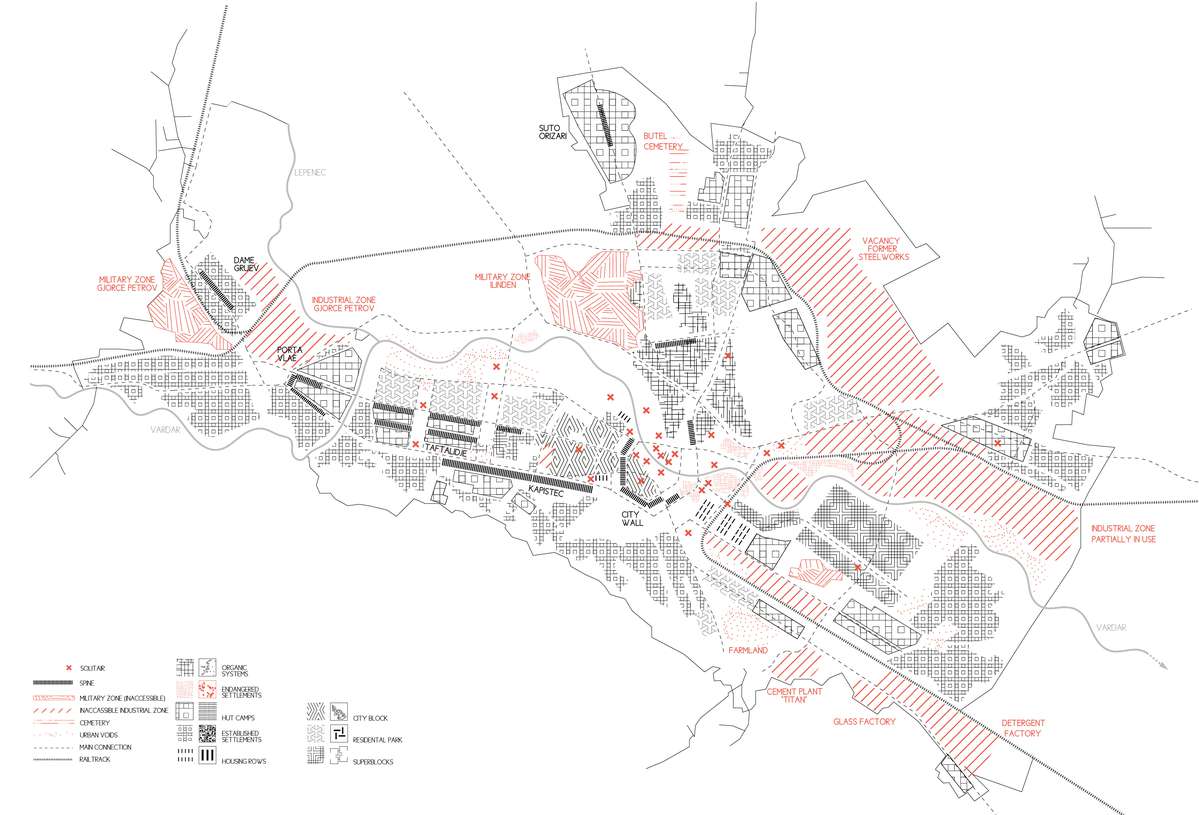
Relation of Urban Fragments
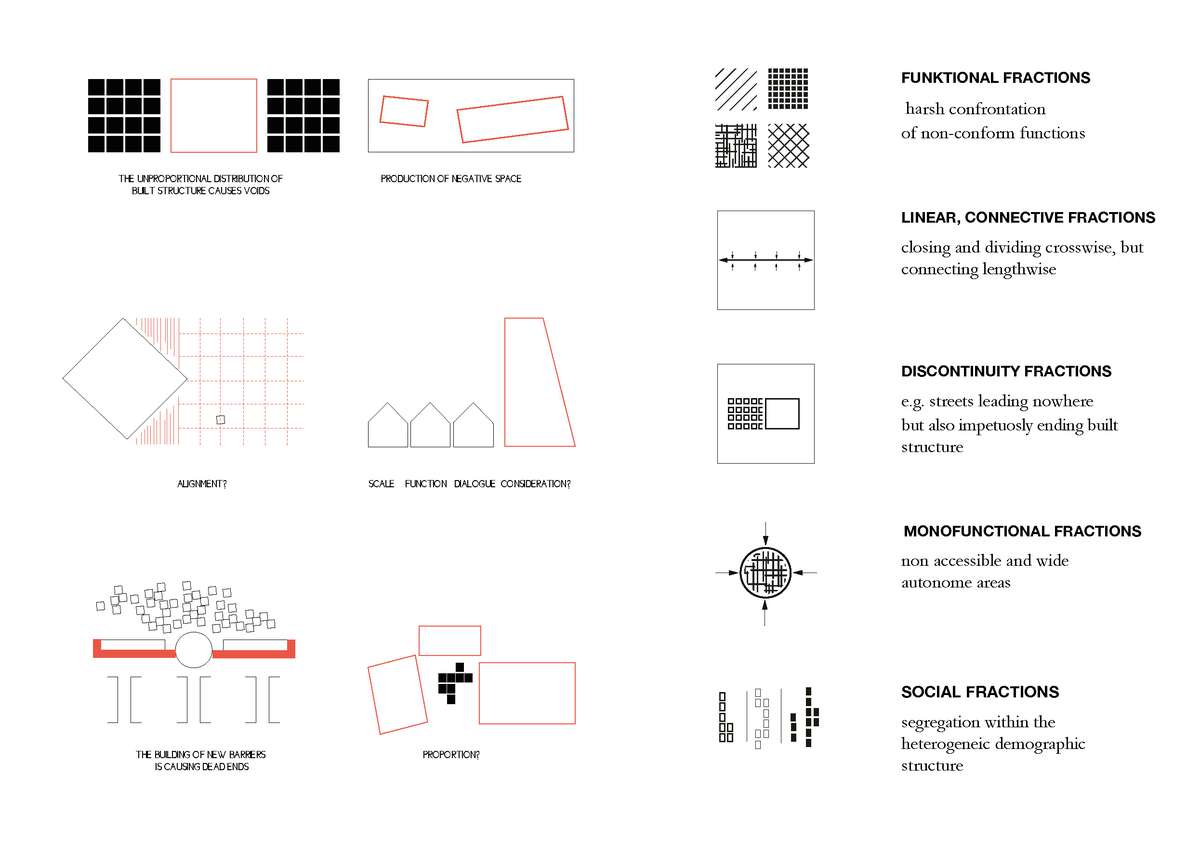
Special Typologies
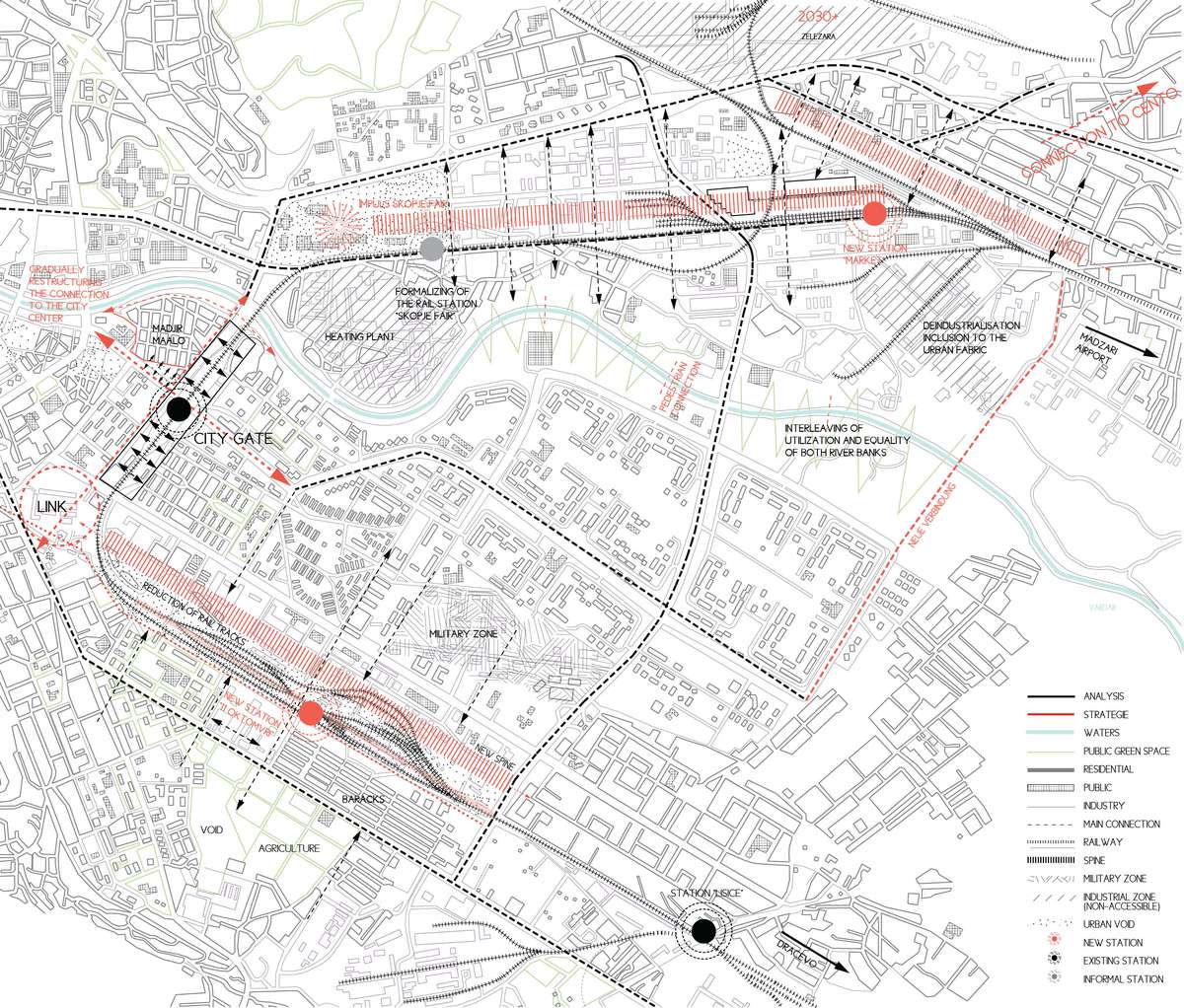
Strategies for further action
Establishing new connections and joints as well as setting new priorities regarding public transportation and pedestrian rights.
Skopje. Beyond The Obvious
Skopje. Beyond The Obvious

Our main goal is to improve the legibility of this complex urban agglomeration - especially in terms of upcoming generations of planners, who are in desperate need of a basis to work on, as well as of an impulse to a more holistic approach in urban planning. We think that theoretical input and the evolution of a new understanding of the city's matrix should be the ground for a structurally and socially adequate operating within the urban organism. Moreover we decided not to criticize obvious weaknesses in Skopje's urban development but to show real alternatives for a further development, which are resulting from the city's structure itself.
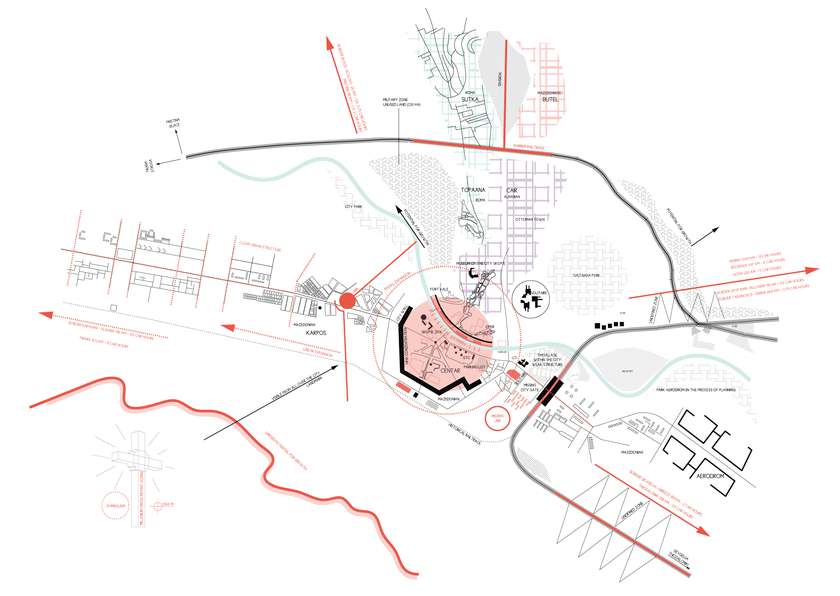
Why does the population in a traditional multi-cultural society so willingly separate itself by using natural or artificial barriers? And taking it further, continuing to erect even more symbolic and built barriers? What came first? Segregation or barriers?
How could a city consist of so many fragments and solitaires, break its continuity over and over, be reckless and rude? Where does this disproportional distribution of density and come from?
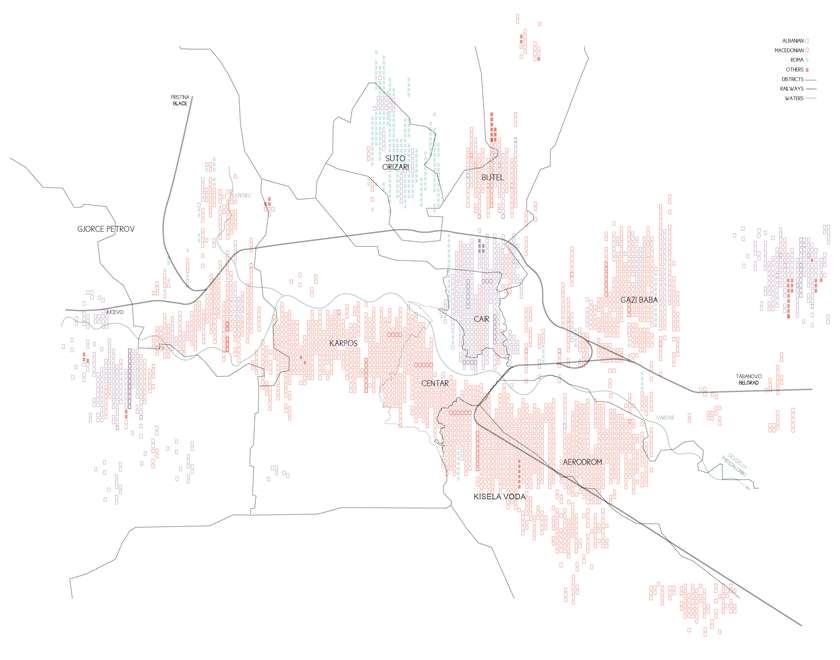
What can be clearly seen is how the segregation works quite consequently along geographical barriers as canyons, rural voids and the river Vardar as well as built and infrastructional barriers as for example the railtrack or boulevards.
But how could Skopje actually become that fragmented city we are dealing with today?
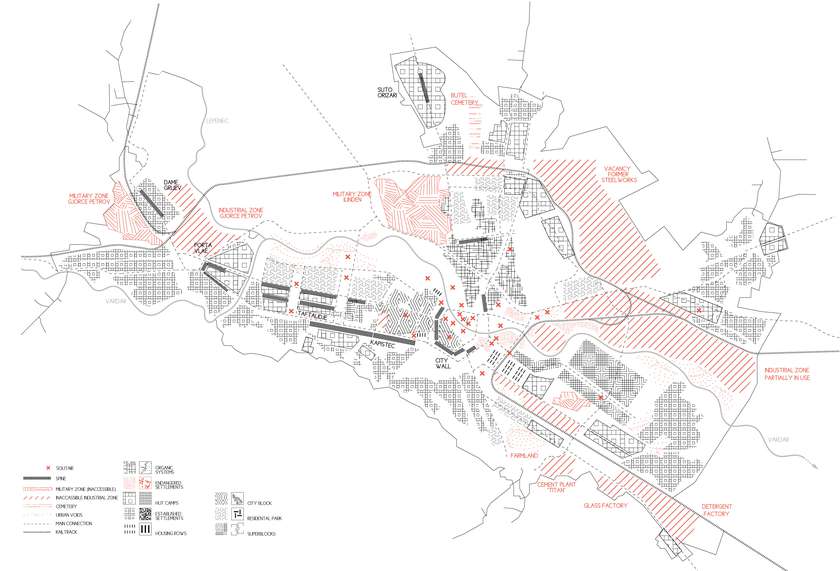
Relation of Urban Fragments
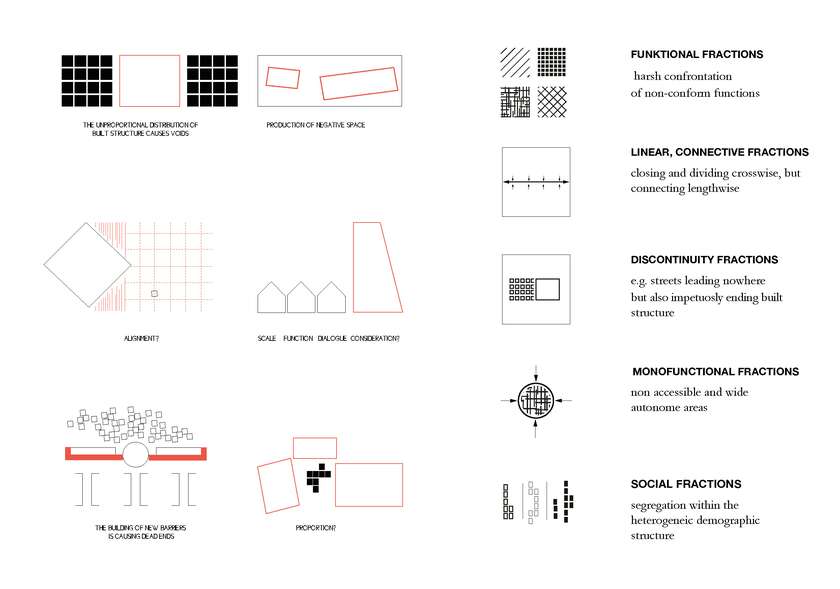
Special Typologies
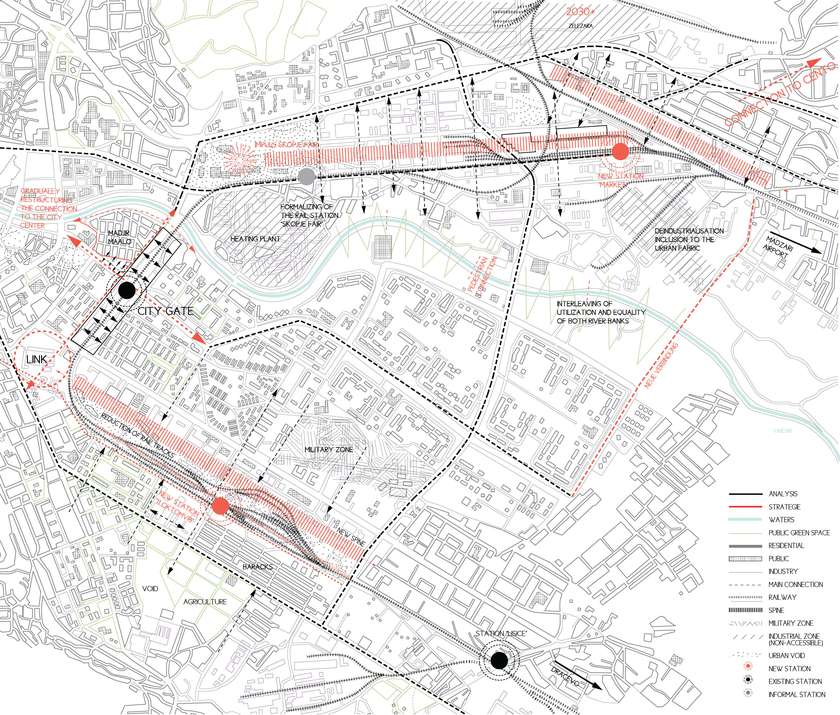
Strategies for further action
Establishing new connections and joints as well as setting new priorities regarding public transportation and pedestrian rights.
